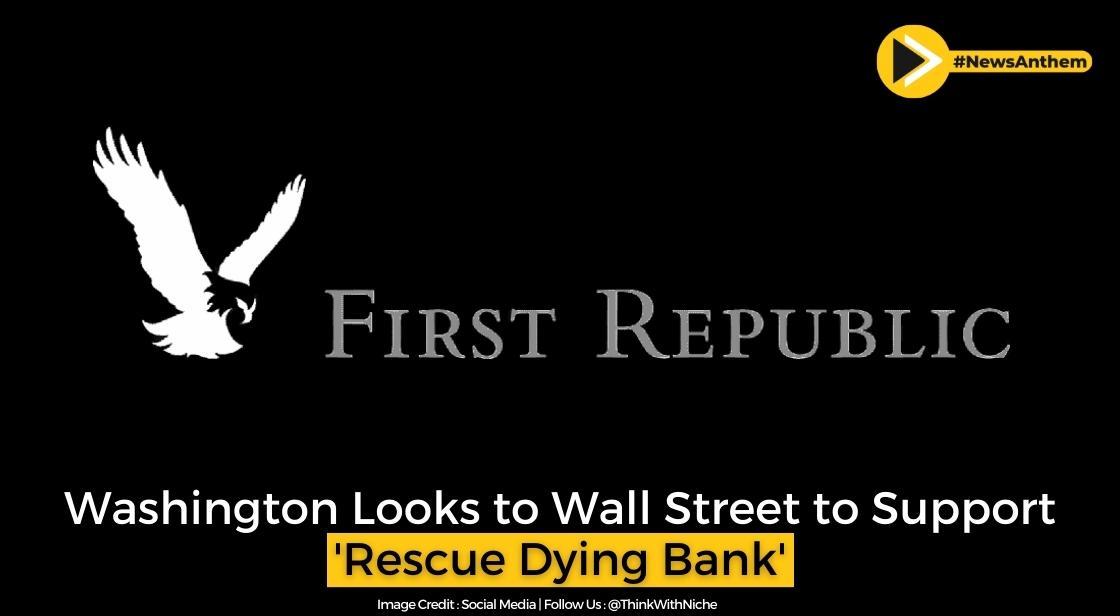Washington Looks To Wall Street To Support Rescue Dying Bank

News Synopsis
The scenario was reminiscent of the previous financial crisis, which occurred almost 15 years ago: Concerned regulators and policymakers in Washington looked to Wall Street for assistance as the banking industry collapsed.
The alarm this week focussed on First Republic Bank in San Francisco, which was once the envy of the banking sector, with its rich and well-travelled customers. The bank was now suffering as a result of some of those customers withdrawing billions of dollars. Policymakers realized as early as Tuesday that the First Republic needed to be saved or it would fail, according to two persons briefed on the situation who spoke anonymously because they were not permitted to disclose specifics.
As a consequence, the nation's leading banks quickly agreed to put aside their competitive tendencies and come to First Republic's rescue. In a show of support, a group of lenders deposited USD 30 billion in uninsured deposits into the California-based bank. The funds provide First Republic with a lifeline as it apparently seeks a buyer. Authorities think it will help boost confidence in the overall soundness of the banking system. The latest instability in the banking industry pales in comparison to the crisis that triggered the Great Recession from 2007 to 2009.
Yet after Silicon Valley Bank and Signature Bank collapsed and were seized by the federal government, the industry's overseers fretted about additional dominoes falling. Treasury Secretary Janet Yellen reviewed First Republic's support with other bank authorities, including the Federal Reserve, the Federal Deposit Insurance Corporation, and the Comptroller of the Currency. They came to the conclusion that a private rescue plan was required to prevent the situation from deepening. Yellen and other policymakers made their first conversation to Jamie Dimon, chairman and CEO of JPMorgan Chase & Co.
There was maybe a sensation of déjà vu: Dimon was Washington's go-to banker in 2008 to find private answers to the banking crisis. "We have our marching orders, " Dimon allegedly told Yellen following the call. He then went about assembling a collection of banks prepared to place deposits with First Republic. This rescue is easily comparable to the 2008 financial crisis. First Republic required funds to replace any deposits that had been withdrawn.
For years, Wall Street banks have been flush, and deposits are one of the cheapest sources of capital a bank can obtain. It was evident that the First Republic was dealing with short-term concerns. The bank borrowed USD 109 billion via the Federal Reserve's so-called "discount window" between March 10 and Wednesday, a process that allows banks to acquire 90-day loans using high-quality bonds as collateral. In times of crisis, the window is frequently employed. The First Republic was not the only one. On Wednesday, the Fed loaned USD 153 billion through the window, which was more than it had done during the 2008 financial crisis.
First Republic's spokesperson did not reply to inquiries for comment on the package or the bank's financial status. These rescues are meant to protect the system from subsequent bank runs. Nevertheless, they do not address banks' "vulnerability to excessive interest rate risk, which was the root cause of these banks' distress," according to analysts at credit rating agency Moody's, who put a half-dozen smaller banks on a list for a potential downgrade this week. During the following 48 hours, the list of institutions eager to help rose to 11 banks, representing a broad cross-section of the US banking industry.
Important News and Blog Tags for Readers
Banking industry crisis
First Republic Bank in San Francisco
First Republic needed to be saved
Silicon Valley Bank and Signature Bank collapsed
Federal Deposit Insurance Corporation
You May Like









